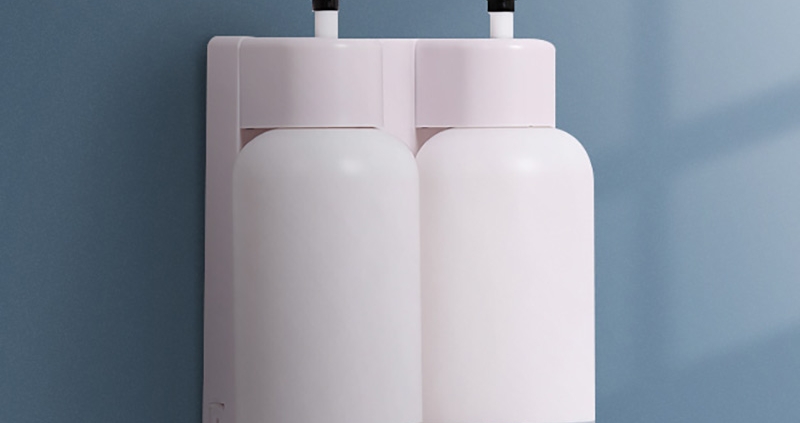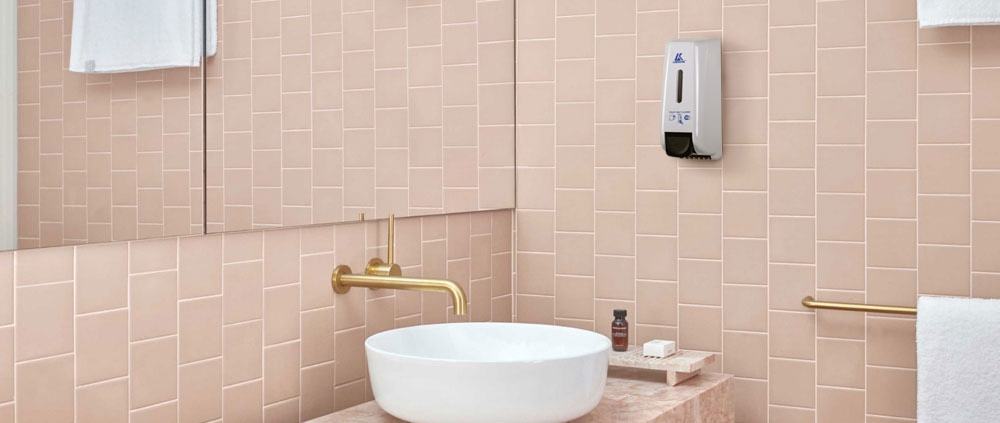Does your complimentary hotel bath include miniature soaps? This may be typical, but you should not limit your choices to traditional ones. Liquid soap dispensers for hotels and other commercial establishments are now available, and you may have missed out on the benefits they bring.
Read on to learn more about liquid soap dispensers and why you should include them in your hotel facilities.
Facts about liquid soap dispensers
The working principle of liquid soap dispenser
Liquid soap dispensers can be wall mounted and are usually installed as indoor equipment. The device dispenses small but sufficient amounts of soap and can be operated manually or automatically.
While its functionality is very simple, some hotels have yet to explore the possible benefits of liquid soap dispensers.
The main advantages of liquid soap dispenser
Environmental benefits
Hotels all over the world contribute to environmental waste. But the good news is that this can be significantly reduced by making the best choices. One study showed that more than 10 billion pieces of packaging from shower facilities are discarded each year. Most of these include partially used hotel toiletries. By choosing a liquid soap dispenser, you will be able to eliminate the need for single-use packaging and reduce waste caused by partially used toiletries.
The guest recognition
As more and more people become aware of the importance of protecting the environment, most of your guests will appreciate the steps you are taking to make your hotel more environmentally friendly. They will appreciate the goal of the change and will most likely support your efforts, especially if you can implement the change while maintaining a luxurious experience.
Other benefits that make liquid soap dispensers ideal
Cost effective
With a liquid soap dispenser, you can provide guests with the right amount of soap for each use, unlike bars of soap, when the shower supplies provided are usually partially consumed and end up in the trash. It controls unnecessary use and ultimately saves your bottom line. Basically, you’ll be providing only what guests can consume, while eliminating the cost of unused soap that guests normally take home.
Easy to maintain
Liquid soap dispensers can hold large amounts of solution. They are easy to use and can be used continuously with minimal maintenance. This means rooms will also take less time to clean, as they no longer need to regularly load hotel toiletries and dispose of part of the soap used and the waste from its packaging.
Modern design
Most liquid soap dispensers have a modern design that can easily match the style of most hotel rooms. Some are also designed to be used with other liquids, so they can be used in hand sanitizers, hand creams, lotions, and more. Their versatility will help you make the most of your investment.
Not surprisingly, a nice, clean bathroom can have a major impact on your business. In fact, a Bradley survey found that nearly 60 percent of Americans made a conscious decision to visit specific businesses because they knew they had nice restrooms. But why invest in a nice bathroom with Mosaic tiles or modern light fixtures if you just want to stick a white plastic soap dispenser box on your wall?
Consider the custom
There is a common misconception that soap dispensers are ugly. While this often comes down to a matter of opinion, some companies offer custom dispensers that can brighten your bathroom and align with your brand image. You can choose from a large number of color and chrome options to customize each component of the allocator, including the allocator backplane, buttons, and lid. Some companies even let you add logos or images and insert text. Customizable options allow you to create one-of-a-kind allocators that will impress everyone who visits your facility.
The Centers for Disease Control and Prevention (CDC) estimates that more than 80 percent of illnesses can be spread through the hands, which is why good hand hygiene throughout the day is so important to keeping everyone healthy. Custom dispensers are not only stylish, but also effective. Unique and eye-catching soap dispensers can encourage proper hand hygiene while leaving customers with a positive impression of your brand and facilities.
Leaving a lot of stuff behind
The last thing you want to do is invest time and money in designing a custom dispenser to dispense contaminated soap. For example, when refilling bulk soap distribution systems, bacteria from the external environment or human hands can easily contaminate soap containers. Even when corrosive products such as bleach are often used to clean equipment, researchers have found a high risk of re-contamination due to biofilms – microorganisms that adhere to each other and stick to surfaces.
The sealed distribution system is “closed” and refilled by inserting a sealed soap box into the dispenser, thereby minimizing the risk of bacterial contamination. This method reduces the risk of contamination by eliminating contact between the product and the environment before it is used for hand washing.
Many bulk dispensers are also unlocked to give guests easy access to the contents of the interior, which can make them a security hazard in public environments. The lock-in cartridge system does not allow users to touch the soap or disinfectant inside, making it a safer solution for high-traffic venues and schools.
The use of antibacterial technology can also effectively reduce the number of bacteria on the soap dispenser. A recent study found a significant reduction in the total number of bacteria on various surfaces and products treated with silver ion technologies such as BioCote.
Beyond the bathroom
The good news is that you don’t have to limit your design ideas to bathroom soap dispensers. A 2015 survey by Bradley Corp. found that while 92% of Americans think it’s important to wash their hands after using a public restroom, only 66% follow through. More than a third of respondents also admitted to not using soap and only rinsing with water. This makes it especially important to provide hand sanitizer throughout the facility.
In order to limit sick leave and prioritize the health of workers, students and guests, soap and disinfectant dispensers that work properly and encourage hand washing must be available. Used in combination with safe hand sanitizer or soap, custom dispensers can help facility managers promote hand washing, reduce the risk of cross-contamination and prevent infection.
It’s also important to remember the power of image and branding. For example, colleges and universities use their brand image in unique ways to attract new students and faculty. A custom dispenser with a school mascot, company logo, or elegant design can help a school or company spread its message and image throughout the building, keeping hand hygiene in mind.
Remind staff, customers, students and other visitors that the best way to use hand sanitizer is to make it accessible and in sight at all times. It’s important to keep hand sanitizer near and around high contact surfaces and public areas, including:
- Entry and exit. A doorknob or light switch can cause widespread illness in any facility. Ensure that hand disinfection stations are available nearby to limit the spread of infection.
- Cafeteria, food court and lounge. Researchers at the University of Florida found that between 20 and 10 million bacteria live between the fingertips and elbows, and eating food with bacteria-stained hands can easily digest the bacteria and lead to multiple infections. Although hand sanitizer can’t replace anyone who prepares food, it can help eliminate certain bacteria.
- High-traffic areas. Hand hygiene stations should be provided in high-traffic areas such as airport terminals, mall corridors and recreation centres to ensure visitors remain as healthy as possible. This not only keeps high-traffic areas clean, but also helps improve the image of an airport, shopping mall or entertainment center.
- Trade counter. Time magazine reported on a 2017 study in which researchers swabbed $1 bills from banks and found hundreds of microbes. It’s important to clean your hands after handling cash, especially if you’re going to eat food later. Keep hand sanitizer near transaction areas, such as cafeterias at checkout counters, to remind people to practice hand hygiene when they need it most.
There are many products that can be stored in the dispenser. Sunscreen, hand sanitizer, heavy duty cleaners, and more can all be dispensed from a variety of types of custom dispensers that contribute to different aspects of health and wellness. No matter where they are located in your facility, these dispensers can be customized to your branding and decor.
A popular dispenser system can make a significant contribution to improving hand hygiene compliance. Bathroom users are more likely to wash their hands with soap if the product is available from an aesthetically pleasing, clean and tidy distribution system. Whether the dispenser has the company’s tagline or color image, consider a company that offers custom dispensers to match any facility’s decor.





